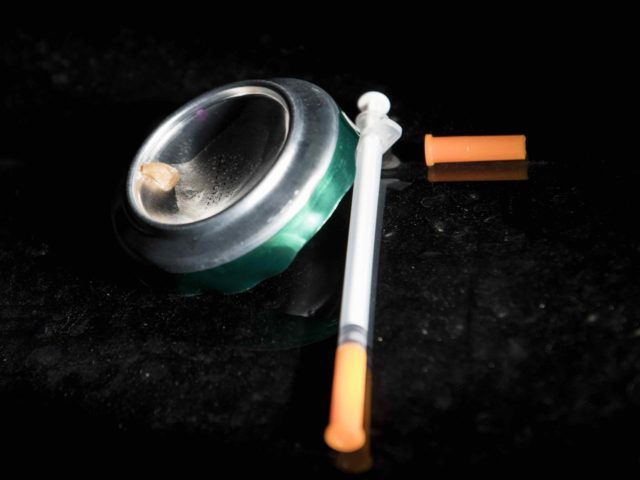Dealers are able to make 30 to 100 times more money from hustling a few grams of synthetic heroin than a kilogram of black tar heroin — which is why so-called “synthetics” are all the rage in California.
California has been relatively less impacted by the exponential spread of synthetic heroin — such as fentanyl, which is 30 times more potent than heroin; and its derivative, carfentanil, which is 100 times more effective. Despite fentanyl deaths rising 540 percent in the last three years to overtake heroin as the highest cause of drug deaths in 2016, California was not in the top 20 for fentanyl overdose deaths, according to the New York Times.
But the San Diego Police Department held a press conference last week to warn that 75 percent of seizures of smuggled fentanyl on the southern border are now coming through Southern California ports from Mexico. U.S. Customs and Border Protection has confiscated almost half a ton of illegal fentanyl at the border this year, almost double last year’s seizures, and up 1,600 percent in the last two years.
With 64,000 fatalities last year, drug overdoses are expected to continue as the leading cause of death for Americans under 50, according to the Center for Disease Control national survey. That number was up 22 percent in 2016, led by fentanyl with 20,100 deaths, passing heroin (15,400 deaths) and prescription opioids like OxyContin (14,400 deaths) to claim the title as America’s number one overdose killer for the first time.
Fentanyl was first synthesized in 1960 by Belgian chemist Paul Janssen and then marketed by Janssen Pharmaceutica. Recreational heroin users over time have come to prefer the pharmaceutical grade “synthetics” because they are 30 to 100 times more potent and much less likely to cause the immediate vomiting that is common with heroin.
Injected fentanyl and its derivative cousin carfentanil are far better at activating the biological response heroin users crave, because they are swifter crossing the blood-brain barrier, readily diffuse cell membranes, and rapidly bind to m-opioid receptors in the brain.
Dr. Samuel Gutman with British Columbia-based Rockdoc Consulting, which provides opioid overdose stations at rock concerts, told Vice.com that dealers are increasingly “lacing” their cocaine and ecstasy offerings with fentanyl and its derivative cousins like carfentanil. He added that making fentanyl is especially cheap, because it only involves a four-step process using readily available non-DEA controlled inputs.
A kilogram of opium gum can earn an impoverished Mexican farmer about $800 from a local cartel, who will spend a couple hundred to refine the product into heroin. A kilogram of heroin smuggled into the U.S. will cost a street dealer about $64,000. That compares to about $5,500 for a kilogram of fentanyl that is at least 30 stronger.

COMMENTS
Please let us know if you're having issues with commenting.